State Picks I-94 Expansion Over ‘Fix at Six’ Proposal
But smaller Stadium Interchange proposed. Public meetings planned on final design for $1.2 billion project.
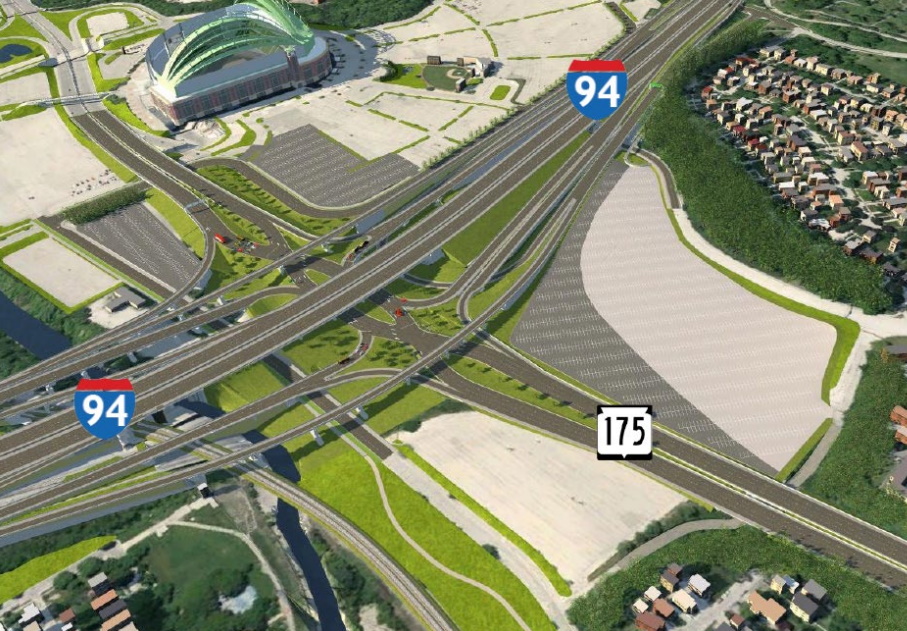
Diverging diamond design for Stadium Interchange. Image from I-94 Supplemental Environmental Impact Statement.
The Wisconsin Department of Transportation (WisDOT) is sticking with its earlier proposal to expand Interstate 94 between N. 16th and N. 70th St. The revised, $1.2 billion project would add a fourth lane in each direction to the freeway as part of a complete, 3.5-mile reconstruction. It would also replace the Stadium Interchange near American Family Field with a smaller, diverging diamond design.
“Safety is our agency’s highest priority and doing nothing about this section of I-94 is not an option,” WisDOT Secretary Craig Thompson said in a statement announcing the recommendation. “Listening to people who live in the community is a vital part of creating safe roads. We placed a high priority on public involvement during the I-94 East-West reevaluation which resulted in significant changes to the previous proposal, and we remain committed to working with stakeholders to minimize any impacts to the community.”
WisDOT studied a six-lane configuration, but concluded it would cost approximately the same amount in large part because the total width of the freeway corridor and the design of the Stadium Interchange were nearly identical under both study options. And while WisDOT, in partnership with the Federal Highway Administration (FHWA), is now recommending the eight-lane option, it’s also recommending a different interchange with Wisconsin Highway 175 than was originally proposed in 2016.
The diverging diamond concept, first unveiled in June, would involve the north-south roadways through the interchange running underneath the elevated east-west freeway. Controlled by stop lights, traffic would briefly drive on what would be considered the “wrong side of the road.” The design strategy results in fewer collision points than a traditional interchange because on-off ramp access doesn’t involve crossing lanes. WisDOT has recently used the design strategy at other interchanges.
The now-completed supplemental study anticipates the final project would cost $1.2 billion in 2021 dollars. The six-lane option would cost $1.13 billion. Reverting either option to the larger interchange would add $80 million to the cost of the project. Construction on the project would start in 2025.
The final design proposed in the study requires the acquisition of 49 acres of land the displacement of six businesses and one home. The six-lane option would have required one less acre of land. The study says the number of commercial and residential displacements was reduced from 11 and eight respectively as a result of design refinements. A number of changes were made to the proposed ramp reconfigurations in the 2016 plan to reduce project costs and displacement. The N. Hawley Rd., N. 35th St. and N. 25th/27th St. ramps would still see new configurations.
The first hearing is to take place Dec. 12 from 3 p.m. to 7 p.m. at the Tommy Thompson Youth Center, 640 S. 84th St. The second is on Dec. 14 from 4 p.m. to 7 p.m. at Marquette University High School, 3401 W. Wisconsin Ave. (enter from Michigan St. parking lot). The same information will be presented at both events.
WisDOT, in a press release, said it would invest $25 million in “transit solutions” during the construction process to mitigate the impact. County officials have hoped to use some of the funding to support the development of the 27th Street bus rapid transit line. The project plan also calls for improved bicycle and pedestrian infrastructure near the freeway.
A study is still underway on converting a portion of Wisconsin Highway 175 to the north to a boulevard. A coalition is also advocating for converting a portion of Interstate 794 to a boulevard.
In press releases issued after this article was first published, project opponents objected to WisDOT’s proposal.
“It is unacceptable that WisDOT has ignored the calls of thousands of Wisconsinites to fix the highway at six lanes and instead decided to move forward with an eight-lane proposal,” said Elizabeth Ward, director of Sierra Club Wisconsin Chapter. “This proposal will increase water and climate pollution, health problems, racial disparities, and more. WisDOT needs to reconsider and move forward with a Fix at Six solution.”
“We have heard time and time again that residents want to see valuable public dollars allocated to the repair of existing local roads, other critical local transportation infrastructure, and enhanced public transit,” said area council members Michael Murphy and Robert Bauman. “To invest such a hefty sum of money into a project that will disrupt businesses and homeowners represents spending priorities that do not align with what people want, especially when traffic volume doesn’t justify the need for additional lanes.”
The pro-expansion I-94 East-West Econ Connect group praised the project.
“We thank WisDOT and FHWA for all the work they have done on this project,” said Corey Zetts, executive director of the Menomonee Valley Partners. “WisDOT analyzed the options using the latest data, continuously sought input from stakeholders, and has incorporated stakeholder feedback for improved bike and pedestrian facilities planned along the various local roadways as part of the project. This diligence will pay dividends for decades with a reduction in congestion-related traffic accidents and a corridor ready to keep up with the region’s bright future.”
The completed study, formally the Supplemental Draft Environmental Impact Statement, is available on WisDOT’s website.
If you think stories like this are important, become a member of Urban Milwaukee and help support real, independent journalism. Plus you get some cool added benefits.
More about the I-94 East-West Expansion
- Transportation: Fix At Six Coalition Sues State, Federal Government Over I-94 Expansion - Graham Kilmer - Aug 20th, 2024
- WisDOT to host I-94 East-West Freeway Project public meetings - Wisconsin Department of Transportation - Jun 12th, 2024
- Open Houses Announced For I-94 Widening - Jeramey Jannene - Jun 6th, 2024
- ‘Fix at Six’ Group Wants I-94 Expansion Delayed For Civil Rights Report - Jeramey Jannene - Mar 20th, 2024
- Coalition Admonishes I-94 expansion Record of Decision - Sierra Club - Mar 20th, 2024
- Feds Approve Interstate 94 Expansion - Jeramey Jannene - Mar 8th, 2024
- Advocates condemn approval of I-94 expansion - Sierra Club - Mar 8th, 2024
- I-94 East-West Project Receives Federal Approval - Wisconsin Department of Transportation - Mar 8th, 2024
- Federal Government Investigating Civil Rights Complaint About I-94 Expansion - Evan Casey - Jan 11th, 2024
- Op Ed: 8-Lane I-94 Expansion Is Worst for Carbon Emissions - Cassie Steiner, Cheryl Nenn and Terry Wiggins - Dec 18th, 2023
Read more about I-94 East-West Expansion here
Transportation
-
MCTS Adds 28 New Buses
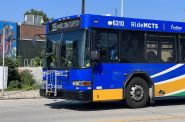 Jul 13th, 2024 by Graham Kilmer
Jul 13th, 2024 by Graham Kilmer
-
MCTS Designing New Bus Shelters
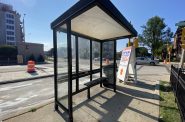 Jul 10th, 2024 by Graham Kilmer
Jul 10th, 2024 by Graham Kilmer
-
MCTS Updates RNC Bus Detours To Better Serve Downtown, Riders
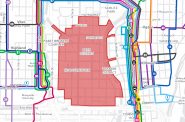 Jul 9th, 2024 by Jeramey Jannene
Jul 9th, 2024 by Jeramey Jannene






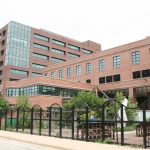















Imagine how many vehicles a single train car can replace. These interstates are such a waste.
The I-94 East-West Corridor Study does not provide convincing evidence that highway expansion is necessary or will address regional transportation goals, grow our economy, or will be intelligently managed. Most importantly, the work fails to draw on or reference worldwide practices and research on many topics. It has failed to address induced demand (Litman, 2022, “Generated Traffic and Induced Travel,” Victoria Transport Policy Institute), where widening highways creates induced demand which leads to further highway capacity problems (Transportation for America, 2020 “The Congestion Con: How more lanes and more money equals more congestion”). Widened highways also have subsequent costs of automobile crashes. The cost of these crashes exceeds savings from the congestion cost reductions, states Robert Steuteville writing in the CNU Journal (Steuteville, 2022, “The cost of crashes is higher than congestion: Congestion costs drive highway expansion decisions, but these costs are dwarfed by the impact of automobile crashes,” Public Square, A CNU Journal, April 29, 2022). Widening highways to reduce congestion is only a temporary solution, damages local communities, and feeds an unsustainable and expensive cycle. Mass transit, Integrated Corridor Management (ICM), and other modern management methods and technologies such as Connected Vehicle (CV) technologies can provide smoother freight transit for the corridor (Leong, 2018, “Study shows autonomous vehicles can help improve traffic flow,” February 20, 2018, Phys.org). The coverage of the large population, jobs, and trip origins and destinations in the study area suggests a mass transit approach to addressing transportation in the corridor, not widening highways. Milwaukee notably lacks a metro-spanning rail network. This lack of coverage of these issues is troubling because it indicates the present transportation system isn’t being managed or planned properly. Adding highway lanes will not solve this inadequacy but lead to still more problems. In light of the inability to prepare a sustainable plan, a different, outside engineering team should be involved that is familiar with these topics to develop a less costly, intelligent six-lane alternative with mass transit support, respect for local communities, and smart transportation management.
I’m not sure which train epvana would like to take, but most trips I take on I-94 don’t involve destinations near any tracks. I’m not against improving mass transit. However I do wonder if the new BRT will make any dent in the traffic. Most people don’t want to invest the time it takes to get anywhere by bus, especially if it involves a transfer.
Over and over again, studies have shown that expanding xways, does not permanently reduce congestion.
Another manifestation of WisDOT’s belief that Milwaukee is simply a place to move through as fast as possible. Ironically (as kaygeeret noted) this will not reduce congestion in the long term.
I note also in the press release that there is the standard “safety” justification. The interchange reconfigurations might have some elements that enhance safety, but the extra lanes are largely irrelevant.
What do they think this will accomplish? Expanding highways to fix traffic congestion feels like the equivalent to suggesting trickle down economics to fix income inequality.
We need more high quality public transportation!
Not only should this expansion of the east west I94 not be done, the entire Marquette Interchange should be dismantled and removed, and force I94 to return travelers to city streets as far west as Marquette University. The construction of the interchange was a great experiment in putting up ribbons of concrete as centerpieces to downtown urban areas 60 years ago. Hideous and destructive, every one of them. Their monstrosity decimated cities from New York to Los Angeles. It’s long past time to correct this unforgivable error of engineering and reconnect our nations highways to cities near their outskirts, not as a shot to their hearts.
A pox on the DOT!
What a waste of resources and space – all to achieve…..what???????
UGH!
Is the justification that 8 lanes cost about the same as 6 lanes, so therefore the better deal is 8 lanes??!! Never-mind the people who live here want 6 lanes and transportation alternatives? Do the powers that be have a comprehensive alternative that would envision rail as a part of the solution? If so, lets see it!
@JMcD I wonder if the cost comparison takes into account future maintenance as well. That is acres more of area to patch, plow, sand, salt and patrol.